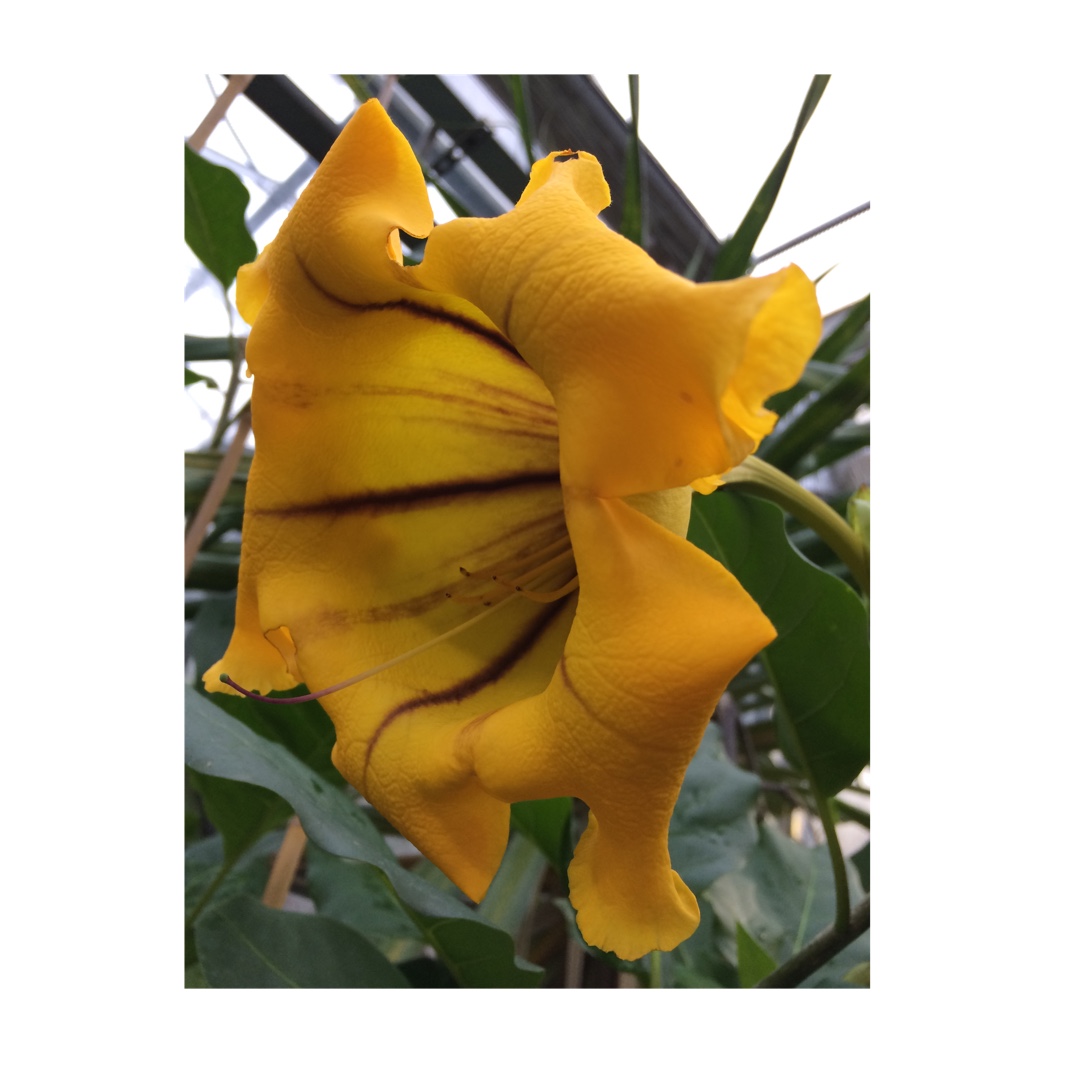
Solanum maxima
Golden challice vine
Exotic climber pollinated by bats hence the huge, deep flower. Highly scented. This plant resembles angel trumpet. It has yellow flowers with "red-purple" stripes inside the trumpet. They need a lot of water and nutrients, and prefer full sun to partial shade. It grows overwinter indoors. I have my plant in front of a window during winter and treat it as a normal houseplant.
Contributed by @SaraVenn
-
Full sun to partial shade
-
Occasional watering
-
A little frost hardy: 32F (0°C)
-
Moist and free draining
Common name
Golden challice vine
Latin name
Solanum maxima
type
Climber
family
Solanaceae
ph
7.0 - 7.8 Acid - Neutral
Plant & bloom calendar
-
Best time to plant
full grown dimensions
 1.00 M
2.00 M
1.00 M
2.00 M
Solanum maxima
Exotic climber pollinated by bats hence the huge, deep flower. Highly scented. This plant resembles angel trumpet. It has yellow flowers with "red-purple" stripes inside the trumpet. They need a lot of water and nutrients, and prefer full sun to partial shade. It grows overwinter indoors. I have my plant in front of a window during winter and treat it as a normal houseplant.
Propagation by cuttings
From Early Summer TO Early Autumn
Take semi-ripe cuttings from summer to early autumn, about 3in long with a heel of older wood. Place around the edge of small pots of multi-purpose compost, place a polythene bag over them and put on a bright windowsill, away from direct sunlight. Gentle heat beneath will speed the formation of roots. The cuttings should root in about four weeks. Pot up individually, protect from frost over winter and plant out in spring.
Propagation by layering
From Mid Summer TO Late Summer
Take a stem of young growth. Cover the stem with soil with the growing tip out of the soil. Place a large stone over it to hold the stem in place and in a few months it will form roots. Leave for a year and then dig up and plant out.
Planting young plants
From Early Spring TO Early Spring
Solanums prefer a neutral to slightly alkaline (limey), well-drained soil in full sun. Best planted against a wall or trellis to which the adult plant can be tied for training or, as long as they are touched by sun, they can underplant taller shrubs and be encouraged to grow through them.








